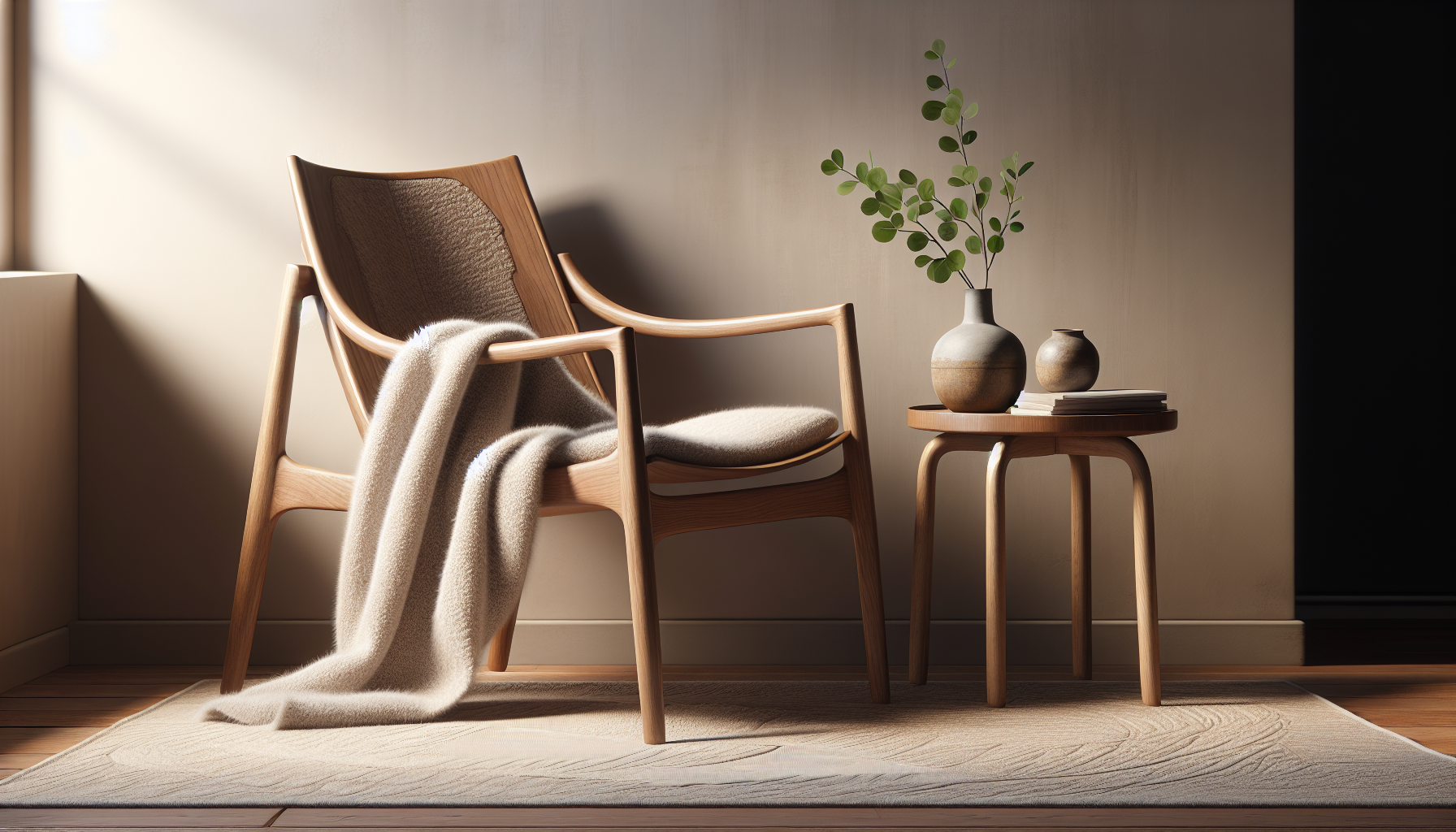Do you want to create a harmonious living space that embodies both comfort and minimalism? Japandi design, a beautiful blend of Japanese and Scandinavian aesthetics, might be just what you’re looking for. By mixing soft and hard textures, you can achieve a cozy yet sophisticated atmosphere. In this article, you’ll learn how to effectively combine these textures to create your perfect Japandi sanctuary.
Understanding Japandi Design
Japandi is not just a trend; it’s a lifestyle that celebrates simplicity, functionality, and the beauty of natural materials. By merging the clean lines of Scandinavian design with the minimalism of Japanese aesthetics, you can foster a calming environment that promotes serenity.
The key to Japandi lies in balancing the hard and soft textures that characterize both styles. By understanding these textures and how they interact, you can make informed choices that elevate your space.
Key Characteristics of Japandi Design
-
Minimalism: Less is more. Japandi emphasizes functionality while maintaining an uncluttered look.
-
Natural Materials: Wood, linen, cotton, and ceramics are staples, providing an organic touch to interiors.
-
Neutral Color Palette: Soft, muted colors dominate Japandi design, enhancing the sense of calm and spaciousness.
-
Craftsmanship: Attention to detail and quality over quantity transforms spaces into havens of tranquility.
By familiarizing yourself with these characteristics, you’ll have a foundation upon which to build your Japandi space.
The Importance of Texture in Design
Textures play a crucial role in any interior design style. They contribute to the overall aesthetic and affect how a space feels.
Why Mix Textures?
Mixing soft and hard textures introduces depth and variety, which are essential in creating a visually appealing environment. Here are a few reasons why texture is significant:
-
Visual Interest: A combination of textures adds dimension, preventing the space from feeling flat or monotonous.
-
Tactile Comfort: Soft textures invite touch and evoke warmth, while hard textures offer a sense of durability.
-
Balanced Aesthetic: The contrast between softness and hardness can create a harmonious balance, essential for the Japandi style.
Soft Textures: Key Elements
Soft textures are typically plush, inviting, and warm. They create a sense of comfort and relaxation in your Japandi space.
Common Soft Textures
| Texture Type | Description | Example Uses |
|---|---|---|
| Fabrics | Materials like linen, cotton, and wool | Cushions, curtains |
| Rugs | Soft carpets or woven mats | Underfoot comfort |
| Upholstery | Plush surfaces on chairs and couches | Living room seating |
| Pillows | Decorative and supportive items | Couch accents |
| Throws | Lightweight blankets for added coziness | On sofas or beds |
When incorporating soft textures, think about items that not only look good but also feel good against the skin. Using various soft textures can enhance the overall ambiance and comfort level of your space.
Hard Textures: Key Elements
Hard textures provide structure and stability in your Japandi design. They can come from natural materials like wood and stone or from more industrial surfaces such as metal and glass.
Common Hard Textures
| Texture Type | Description | Example Uses |
|---|---|---|
| Wood | Natural and warm, often used in furniture | Tables, flooring |
| Stone | Cool and rugged, adds an earthy feel | Accents, countertops |
| Metal | Sleek and modern, introduces an industrial vibe | Light fixtures, frames |
| Glass | Transparent and open, maintains light flow | Decor pieces, partitions |
| Concrete | Raw and textured, can feel industrial yet chic | Walls, tabletops |
By strategically placing hard textures, you can create strong focal points that anchor your space while allowing for soft elements to shine.
How to Mix Soft and Hard Textures
Mixing textures is not just a matter of randomly placing soft and hard elements together; it requires thoughtful consideration to create a cohesive look. Here are a few tips to help you harmoniously blend these textures.
1. Layering Textures
Layering is essential in Japandi design. By placing soft textures over or next to hard textures, you build a rich and inviting space.
Example: Consider adding a soft, woven throw on a solid wood chair or layering distinct rugs—one soft and plush over another durable yet sleek. This layering creates a lush environment while maintaining the Japandi aesthetic.
2. Balance is Key
Strive for balance between soft and hard elements. If a room features many hard textures, introduce a greater amount of soft pieces for contrast, and vice versa.
Example: In a living space with a sturdy wooden coffee table, softening your seating options with plush cushions or fabrics can create a welcoming setting.
3. Play with Scale
Combining large and small elements can create interest.
Example: Large, hard furniture pieces can be paired with smaller, soft accessories to maintain balance in scale. A substantial wooden dining table can be complemented by smaller, upholstered chairs for a charming effect.
4. Color Coordination
Soft textures can often be used to add color, while hard textures tend to be more neutral. Coordinating colors among your soft and hard elements can create visual harmony.
Example: If your sofa is a neutral tone, you might choose vibrant cushions or a colorful throw that brings warmth and life to the space while still adhering to the Japandi aesthetic.
5. Focus on Functionality
In Japandi design, functionality is vital. When mixing textures, ensure that each piece serves a purpose and enhances the overall layout of the room.
Example: A woven basket can be both a decorative soft texture and a functional storage solution.
6. Incorporate Natural Elements
Natural elements are fundamental to Japandi design. Use houseplants to introduce soft textures in an organic way while hard elements can be introduced through pots or planters made from clay or stone.
Example: A large leafy plant in a ceramic pot beside a sturdy wooden bench can beautifully meld the different textures while bringing life into your space.
Practical Applications of Mixing Textures in Different Rooms
Texture mixing can be implemented in various parts of your home, each having its unique requirements and styles.
Living Room
The living room is often the heart of the home—a gathering space that should reflect comfort and style.
- Soft: Layering cushions and throws on the sofa can make it an inviting retreat.
- Hard: A coffee table or side table made of reclaimed wood adds structure.
By combining these elements, your living room will feel inviting without sacrificing sophistication.
Bedroom
The bedroom should be a haven of relaxation.
- Soft: Utilize soft linens and blankets on your bed for maximum comfort and a cozy feeling.
- Hard: Wooden bedside tables or a sturdy headboard adds a grounding touch.
Create a soothing environment by carefully balancing soft and hard textures to make your bedroom both a restful and stylish space.
Dining Room
For the dining room, it’s all about creating an inviting atmosphere for meals and gatherings.
- Soft: Consider soft upholstery for dining chairs paired with textured table linens.
- Hard: A solid wood dining table can serve as the room’s centerpiece.
Mixing these elements creates an enjoyable dining experience while maintaining aesthetic harmony.
Bathroom
The bathroom is often overlooked in terms of texture, but it can provide a serene retreat.
- Soft: Plush towels and rugs contribute a spa-like vibe.
- Hard: Marble countertops or ceramic sinks offer elegance and durability.
The right mix of soft and hard textures can transform your bathroom into a relaxing sanctuary.
Regular Maintenance of Texture Mixes
Adding the right textures to your space is just the beginning. Ensuring those textures remain beautiful takes regular maintenance.
Tips for Maintenance
- Cleaning: Regularly dust hard surfaces and wash soft fabrics to keep them looking fresh.
- Rotation: Occasionally switch up your cushions or throws based on seasons to keep the space feeling vibrant.
- Preserving Natural Materials: Use appropriate cleaners for wood and stone to maintain their integrity over time.
Caring for your textures helps sustain the welcoming feeling you cultivated from the beginning.
Bringing It All Together
Mixing soft and hard textures in Japandi spaces can seem intimidating, but it provides a unique opportunity to express your personal style while adhering to the calming principles of this design. By thoughtfully considering how different textures interact, finding balance, and maintaining your space, you can create an inviting and stylish haven that beautifully reflects the essence of Japandi design.
By following the advice laid out in this article, you’re well on your way to achieving a harmonious space where comfort meets elegance. So, are you ready to start mixing those textures?

